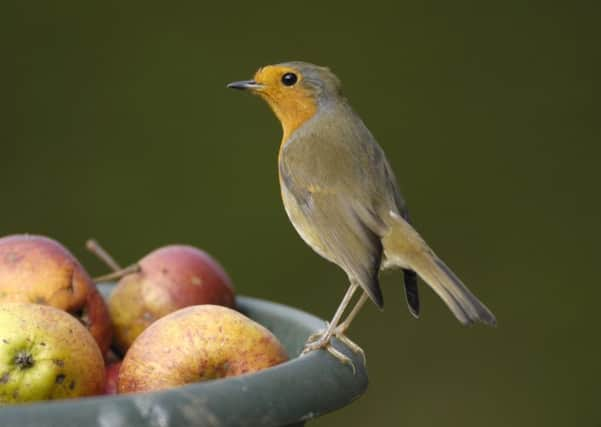Less is more for wildlife in your garden this autumn
This article contains affiliate links. We may earn a small commission on items purchased through this article, but that does not affect our editorial judgement.


However, trim and tidy doesn’t really work for the many animals and insects that live in gardens, so here’s a list of tips from the RSPB to help keep things nature friendly.
Don’t manicure your autumn garden
At this time of year it’s really important to avoid the urge to cut back and tidy outdoor spaces too much. Nature benefits from decaying plants and leaves so don’t feel guilty about leaving them in place where it’s safe to do so.


Advertisement
Hide AdAdvertisement
Hide AdFallen leaves create a cosy layer for garden mammals and insects to snuggle down in when frost and ice hit. The hollow stems of dead plants and seed heads in pots, window boxes and gardens also provide a safe insect hidey-hole from frosts.
If you have any dead wood in your autumn garden, or if you’re already sweeping up rust coloured leaves from balconies or patios, gather them into a pile in a corner. Insects and small mammals, including struggling hedgehogs, will thank you for creating a snug home for them.
Ivy wears the crown this autumn
Ivy is one of the best plants for your garden wildlife all year round, urban or rural, but especially during autumn and winter. Whereas most nectar rich plants are starting to die off, ivy’s flowers are only just beginning to blossom, providing a vital late source of food for bees, butterflies and other pollinators. Ivy’s evergreen leaves offer crucial shelter for birds and insects even throughout the colder months, when other natural cover is thinning out.
And don’t forget ivy’s ripe, winter jewels; its berries. These are a crucial, calorie-rich source of food for your feathered garden friends, just when they need that extra energy hit to enable them to maintain their body temperatures. If you do one thing this autumn, nurture your garden ivy and if you don’t have one, plant one.
The garden bird vanishing act
Advertisement
Hide AdAdvertisement
Hide AdDuring September and October you may worry where your much-loved garden birds have gone as the well-stocked feeders lay unattended.
But fear not, this is a totally natural occurrence at the beginning of autumn. Nature’s hedgerows are now studded with berries and other fruit which are all delicious to garden birds. Birds will always favour feeding directly from nature’s pantry, so whilst her stocks are bountiful you will naturally see a drop in garden feeder visits.
However, keep their food and water sources topped up, because when temperatures drop the berry crop dwindles and still water freezes over, your favourite garden birds will return to your feeder and bird bath. They rely on your fresh water and high-energy, high-fat winter food to fuel them through the colder months.
New house guest
In the lead up to winter you may spot in your house either a small tortoiseshell or peacock butterfly perched on the wall in a corner of a room, unmoving, having entered their winter dormant stage. But as temperatures continue to drop outside and our central heating is turned on, these butterflies can be woken up too early by the increased temperatures, which fool them into thinking spring has sprung early.
Advertisement
Hide AdAdvertisement
Hide AdThis isn’t a good thing for a butterfly as their outside environment is too cold and offers little nectar for them to eat. If you spot an early rising butterfly in your home catch the butterfly carefully and move it to an unheated room or sheltered outdoor spot from which it can easily escape in the spring.
For more top tips on how to give nature a home, visit: www.rspb.org.uk/myplan